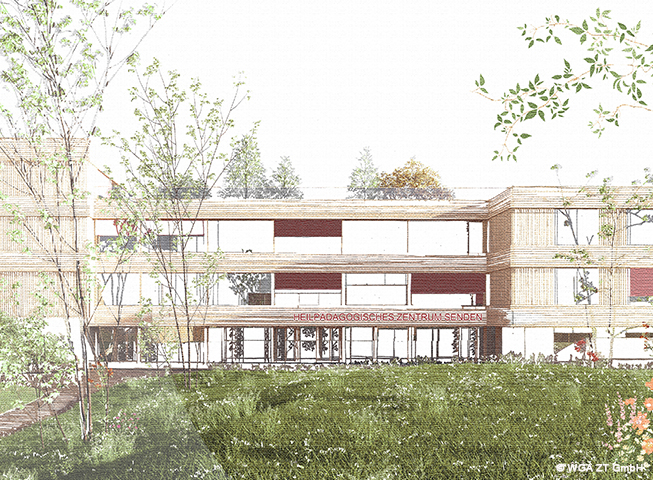Given the increase in both the number of users and the technical requirements, building a new, accessible special education centre in Senden has become essential. At the core of the project is a new building that not only offers a functional and structured use of space but also makes an active contribution to being climate neutral. The goal is to create a sustainable building that meets the highest standards in every aspect – socially, environmentally and economically.
The design for the new building blends in with the topography and the buildings in the surrounding area. It also helps users find their way around intuitively with its clear functional division into a children’s house, general areas and a youth area.
The easily recognisable main entrance on the north side forms the core element of the new building with its central location that helps create a welcoming environment.
The interior of the building is marked by strong visual references to the outside space: generous windows and targeted sightlines create a communicative atmosphere and clear orientation. The flexible and structured use of space with variable walls and curtains allows areas to be separated and combined for a variety of different uses – from quiet retreats to open rooms for groups. Green terraces extend the space to the outside and create additional places to relax and learn. The clear structuring of functions helps users find their way around, while colours, materials and light promote intuitive use.
The design of the open space creates a green setting around the property with terraced outdoor areas created by differences in height in the way that trees that have been planted.
Using timber as a façade material additionally emphasises sustainable architecture and creates a natural environment. Complementary roof and façade greening contributes to improving the microclimate.
An example of responsible, forward-looking construction has been created by using local materials and accounting for all of the CO2 the building will produce over its entire life cycle – where the needs of users are in harmony with the requirements of environmental sustainability.

